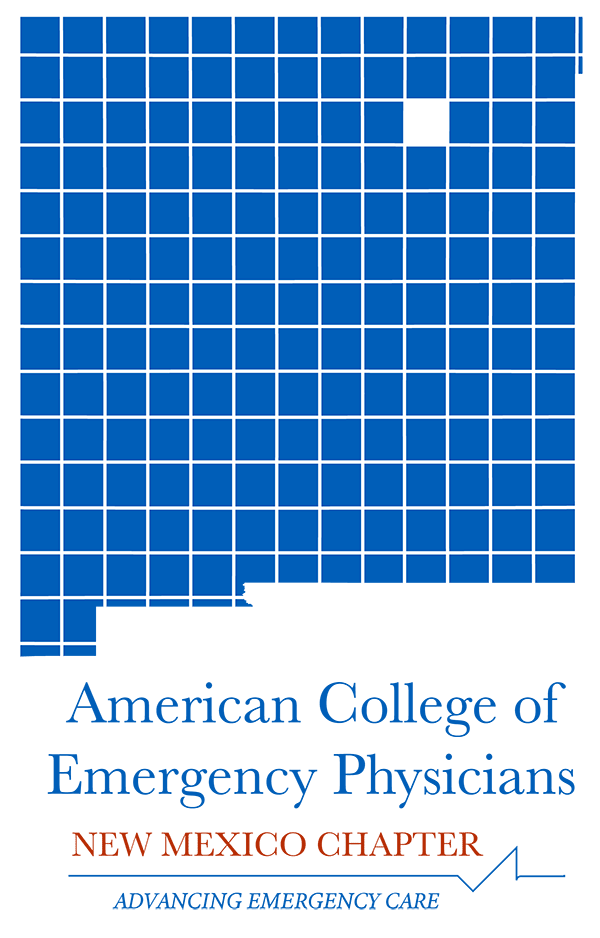Ralph Bauer, MD
On May 2nd, the NMACEP annual meeting featured reports on how different emergency departments are coping with the COVID-19 pandemic. Leaders from Presbyterian, University of New Mexico, and Gallup Indian Medical Center presented some of the recent changes and challenges posed by this virus. For this Residents’ Corner, I am covering the highlights of this session for those who could not make the meeting.
Dr. Natasha Kolb, medical director for Presbyterian Emergency Services, started the discussion with an overview of her hospital’s response. All of Presbyterian’s ERs now have outdoor tents staffed by a paramedic or RN for screening and registration. Swabs, ECGs, and labs can be obtained in these areas. The Rust ER even features a swabbing booth that separates patients and staff members doing the swab. All unstable patients are brought into the ER which now feature a dedicated pod for PUIs or known COVID patients. These pods have designated staff which includes a scribe listening in by way of Vocera. Overall, ER volumes have dropped nearly 35%. Interestingly, most of the COVID positive results are coming from Pres Now sites.
Dr. Steve McLaughlin, Chair of UNM Emergency Medicine, also provided an update regarding changes happening at UNMH. It appears UNMH and Presbyterian have had very similar strategies in combating this pandemic. A respiratory triage tent has been constructed for screening and swabbing purposes, which has seen increasing volumes over the past weeks. The UNM ER has been rearranged to separate COVID suspected patients needing resuscitation or admission. This includes a new ambulance entrance to triage all patients endorsing respiratory complaints. Patients are being universally masked in the ED, just as they are at Presbyterian. All COVID care is compartmentalized into dedicated teams. A new development under way is that every patient now admitted to UNM will be swabbed. As of late, the most pressing concern at UNM is ICU capacity. The ICUs are now overflowing into other areas of the hospital, such as the Pediatric PACU, which is mostly due to transfers from other areas in the state. While ER volumes seem to be slow and steady in Albuquerque, the picture is much different in the areas surrounding Native American Reservations such as Gallup.
Dr. David Cheever, medical director of Gallup Indian Medical Center, joined the discussion to give an update from one of the epicenters in New Mexico’s ongoing battle with COVID. At the time of the discussion, Gallup was #2 in the nation for new cases per capita. In order to accommodate the steep increase in cases, GIMC has increased their ED capacity from 19 non-isolation beds to 28 respiratory droplet rooms, including 1 negative pressure room and 1 outdoor critical care space. Eleven beds were created from a nearby pediatric clinic. Beds in the ED, once separated by curtains, are now makeshift enclosed rooms with plastic barriers. The hospital was able to increase its inpatient capacity from 35 to 50 beds, but unfortunately has been unable to expand the 6 bed ICU. GIMC has also set up an outdoor waiting room and tented triage area. Thankfully, Dr. Cheever reports physician staffing has been able to keep up with the increased volume, but they have had issues staffing nurses and other support staff.
It is clear that COVID has resulted in major changes in both our personal and work lives. Is this the new normal? I would like to think not, but it’s hard to say. Regardless, it’s clear that the emergency medicine community of New Mexico will continue taking care of our patients, no matter the challenges that stand in our way.
